Not always a cat vomits and vomits from poor quality food or overeating, there are many more reasons for this phenomenon.
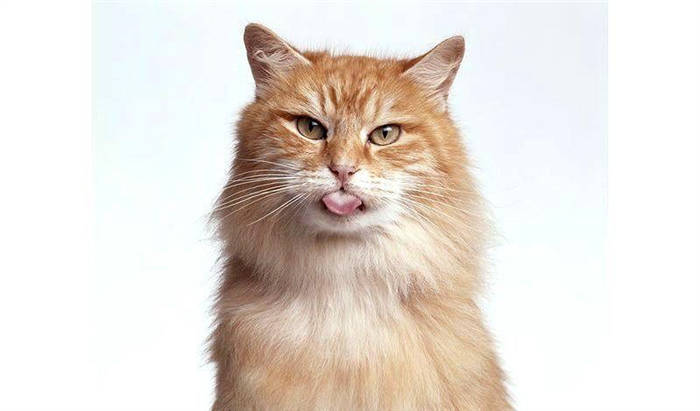
- Cat vomits food what to do
- So, let's understand why a cat vomits?
- Symptoms of vomiting in cats
- Causes of vomiting in cats
- Symptoms of vomiting in cats
- Varieties of vomiting
- Vomiting in kittens
- Danger of the condition
- Foam
- With blood.
- With chunks of food.
- Yellowing.
- When to see a doctor
- Treatment
- How to avoid vomiting
- When you need to see a veterinarian urgently
- Prevention
Cat vomits food what to do
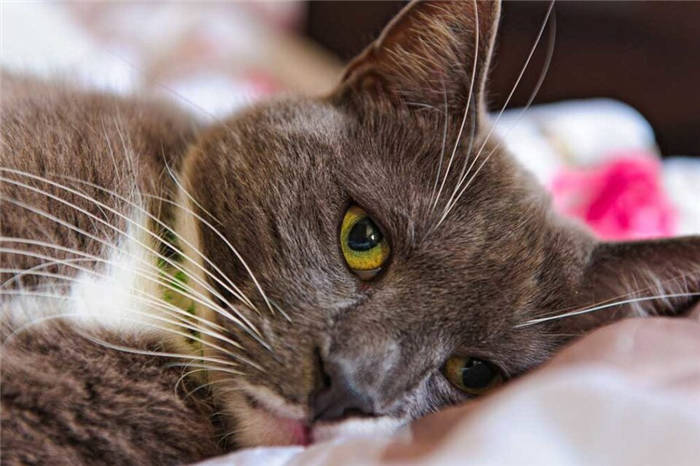
Vomiting in a cat after eating? Has the cat started to vomit often? What to give a cat from vomiting? What to feed a cat after vomiting? In this article we will answer these and other questions, deal with the causes of frequent vomiting in cats and learn how to take the necessary measures.
There is almost no pet owner in this world who has not at least once seen such a phenomenon as vomiting in his pet. Vomiting in cats is a reflex process whereby the contents of the stomach are expelled through the mouth, sometimes through the nose. There is contraction of the abdominal muscles, heavy salivation, and involuntary swallowing movements. The act of vomiting in a cat is regulated by the vomiting center, which is located in the medulla oblongata.
Not always pet owners pay proper attention to what has happened, very often believing that it is simply the body's reaction to the food. Indeed, vomiting in a cat may have a perfectly simple cause that does not need to be examined by a veterinarian. But the difficulty is just that the causes of vomiting in a cat are so varied that determining the truth, can be a very difficult and time-consuming task.
So, let's understand why a cat vomits?
Vomiting is not a specific disease, it's a symptom. Let's reassure you right away, if your cat is completely healthy and has vomited once, you don't have to worry. Conventionally, the causes of vomiting in a pet can be divided into two groups:
- Natural causes include, for example, hungry vomiting. It usually occurs in the morning when the pet has not eaten for more than 12 hours, i.e. on an empty stomach. Most often, this condition is due to the active secretion of gastric juice, which irritates the walls of the mucosa on an empty stomach and then comes out with vomiting. In this case, the cat is vomiting saliva or the cat's vomit will be white foam with little or no odor. These are variations of the norm. To avoid this, you just need to change the feeding time and take the longest break between meals of no more than 10 hours. The cause of white foam vomiting in a cat can also be the beginning pathology of the digestive tract. To get rid of this unpleasant condition your pet will be helped by a natural diet. It is advisable to give up dry food for a while, especially if you have food on hand at all times. Sometimes, yellow vomiting in a cat appears on an empty stomach. If your cat vomits yellow, this may indicate the presence of bile in the vomit. This can happen when the animal is hungry and the gallbladder secretes juice, which gets into the stomach and mixes with gastric juice. And since normally bile is not in the stomach, it begins to irritate the mucosa, which as a result is the reason why the cat vomits. However, one-time vomiting is not the same as constant vomiting in a cat yellow, with abundant bile content. If in the first case, the animal is active, eating well and his behavior has not changed, you can not go to the vet. If such vomiting occurs often enough, it means that there is a regular outflow of bile from the small intestine into the stomach, which should not happen during normal operation of the gastrointestinal tract. This means that you can not put off going to a specialist veterinary clinic. Also, the reason why the cat vomits yellow or white foam may also be an infectious disease.
- Often cat vomiting undigested food or cat vomiting white foam is provoked by overeating or swallowing food quickly. In this case, the cat's stomach is relieved of excess food because it is adapted exclusively to small portions. He does not like large portions, especially cold portions. Overeating is one of the most common reasons why a cat vomits after eating. If you see a cat vomiting after eating undigested food, know that this can be avoided by feeding the cat often, but a little at a time.
- Also, "purge" vomiting can be considered a natural need of the cat's body, which helps cats periodically free their stomachs of clumps of hair. This occurs when the cat vomits hair. This physiological cleansing of the digestive tract helps to avoid the formation of a hairball, which can block the intestinal lumen and cause obstruction. Interestingly, hair vomiting is more common in domestic cats. What should you do if your cat vomits fur? First of all, you need to pay attention to the cat's diet, as this is one of the main causes of hair vomiting. There are even special foods to facilitate the excretion of hair. Secondly, regular combing of long-haired cats plays a big role in prevention. This reduces the amount of ingested hair. A more radical method is to shave the cat under the machine. You should comb the cat both along the hairline and against it, thus combing out the undercoat and removing the dead clinging hair. Sometimes the sound of combing may also make the cat vomit. Why do cats vomit from a comb? This is how they react to the sound made when they run their finger over the teeth of the comb. Don't do it in front of your pet. There are special pastes and oils for hair removal. The effectiveness of specialty foods and pastes is to improve intestinal peristalsis and hair excretion. Ask your veterinarian for a solution. Remember, not all cats are willing to take medication voluntarily. So, take the advice – apply the paste to the cat's paw and it will lick it off on its own in an effort to wash its paw. In general, if you take care of your cat, know what to do at home, i.e., combing out and not overfeeding – you can avoid the symptom of vomiting in both short-haired and long-haired cats.
- When switching to a new food is the cat vomiting white foam? If it happened once and has not happened again, you should not be nervous and panic. Foam forms in the cat's stomach to protect its walls. Switching to a new food can produce an excess of this secretion, which is removed from the stomach by vomiting. Here is the answer to the question of why a cat vomits after eating new food.
- Vomiting in a cat can happen when the vestibular apparatus is not working properly. This can happen, for example, during a trip on public transport. Be attentive to your cat during car rides and public transportation. Remember, the right temperature is also very important for the pet. Never leave your pet in an enclosed car in summer, even temporarily.
- Another standard cause of vomiting in a cat can occur during pregnancy and is associated with hormonal changes. In this case, the cat may vomit liquid, maybe dry food. This vomiting is short-lived and lasts until the cat's body gets used to the new condition.
- It is even possible that vomiting in cats can start from stress. Furry hunters are very emotional and hard to handle shocks. So even stress can be the reason why a cat vomits white foam. It can also be expressed as a loss of appetite, apathy.
Symptoms of vomiting in cats
It is not difficult to know if a cat is vomiting. Vomiting has characteristic symptoms. For example, nausea, restless behavior, body tension, abdominal soreness, increased salivation, involuntary swallowing movements, slurping, and refusal of food and water. However, in some cases the first attacks of vomiting are confused with belching (regurgitation) or coughing.
To distinguish one process from the other, watch or videotape your pet's behavior. Any veterinarian can help diagnose a vomiting attack, even remotely.
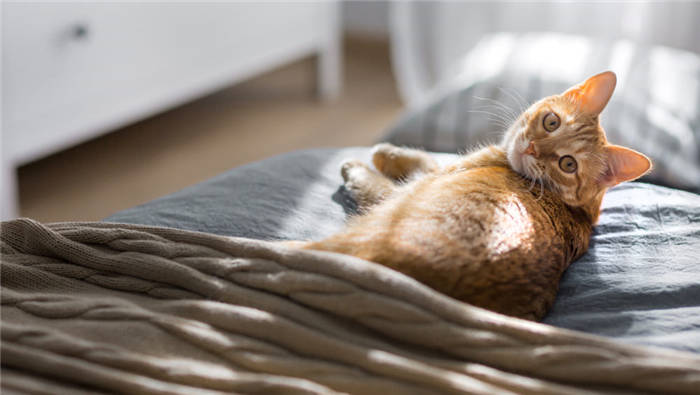
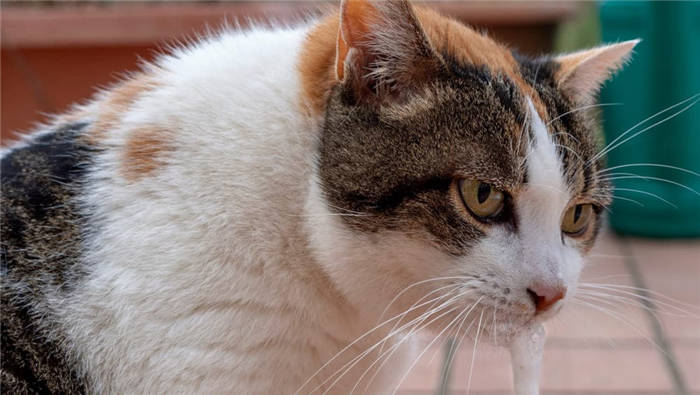
Vomiting is an active process that occurs with some effort and is accompanied by a number of precursors. Cats assume a tense posture, arching their backs, squatting on all four paws, stretching their necks and putting their heads down.
Burping is a passive process that occurs spontaneously, without any symptoms. Undigested food comes out of the esophagus without muscle contractions.
Coughing is clinically similar to vomiting more. But while with vomiting, cats spew bits of undigested food and gastric juice, with coughing only small amounts of mucus or foam.
Causes of vomiting in cats
In most cases, vomiting in cats is associated with disorders of the gastrointestinal tract. However, there are many more causes of malaise. For convenience, they are divided into two main groups: physiological and pathological.
Physiological causes of vomiting are caused by the natural purification of the body from unnecessary or unfamiliar products. Purification of the body occurs against a background of a lack of enzymes necessary for digestion, or irritation of the gastric mucosa. If you adjust the cat's diet and feed it digestible food, the vomiting will go away on its own. There is no need to treat the cat with medication.
– Abrupt change of food. If a cat eats the same thing and then tries something new, the body reacts with vomiting and indigestion. The pathological process is associated with a lack of enzymes needed to break down unfamiliar food.
– Hunger. Prolonged interruption of food intake provokes the active production of gastric juice, which corrodes the walls of the stomach and provokes irritation of the mucosa. The cat vomits before or during meals with white or light yellow foam. Such vomiting is called hunger vomiting.
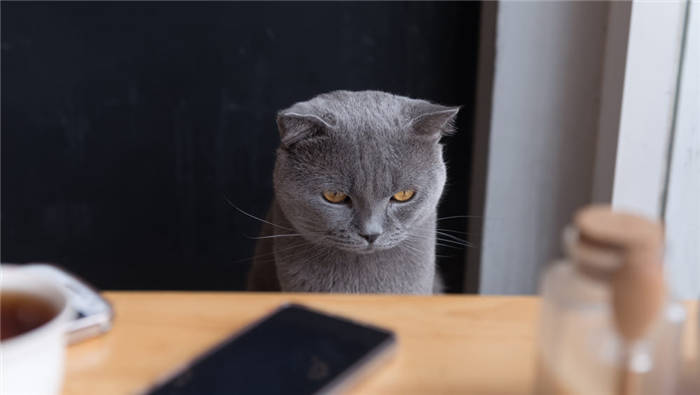
– Overeating. If a cat eats more than it can digest and swallows large chunks of food, some of what it has eaten is spewed out along with gastric juice and foam. When overeating, the cat may vomit both during and immediately after eating. The problem is solved by a strict dosage of a single serving.
– Lumps of hair. All cats are very clean, so they lick themselves after every meal or contact with another animal or person. As a result, hairballs accumulate in the stomach, which irritate the mucosa and provoke vomiting.
Usually the cat vomits hair once and the condition of the animal quickly stabilizes. But if the vomiting turns brown, see your veterinarian immediately. It is likely that the hair has blocked the intestinal lumen, and only surgery can get rid of it.
Symptoms of vomiting in cats
The main sign of nausea in cats is salivation, drooling, the cat "chomping", licking, often swallowing saliva. Nausea may be accompanied by a gag reflex or be unproductive.
Salivation is the norm when riding in a car (cats get carsick, too), and some saliva may be secreted with pleasure, when a cat purrs, pats you on the cheek, and looks extremely satisfied. "Chomping" and constant tongue movements can be a symptom of dental disease. And inability to swallow and salivation can be a symptom of a dangerous infection, rabies.
Vomiting in cats can be confused with belching (regurgitation) and with coughing. If in doubt, videotape the process and show it to your doctor at your appointment. In true vomiting, the cat assumes a characteristic posture, it archs, its abdominal wall muscles contract, vomiting may be accompanied by specific guttural sounds, the owners describe it with the words "cat vomits".
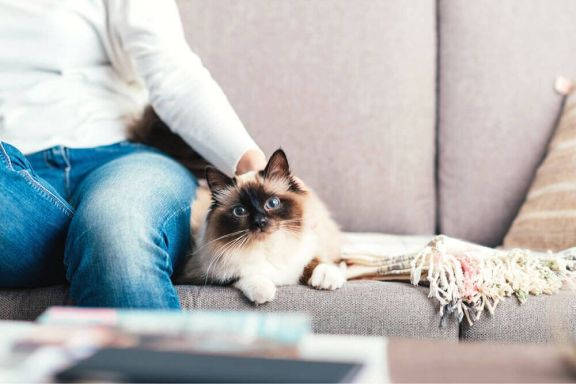
Varieties of vomiting
Previously, we tried to describe the most common causes of vomiting in cats. Let's try to look at the different types of vomiting and assume for which diseases they are characteristic.
- Vomiting white foam. White foam is gastric juice and saliva. Such vomiting is found in gastritis. It is white foam vomiting – a typical variant of "hungry" vomiting in cats.
- Vomiting transparent mucus. Most likely in such vomit masses is dominated by saliva. Severe nausea and salivation can occur with gastritis, pancreatitis, and foreign bodies in the mouth.
- Vomiting a gray mass. Take a closer look, you will most likely notice wool in such a mass. Such vomiting may be a variant of the norm, if it does not happen often and is not accompanied by a lack of appetite and apathy. If vomiting gray mass is more frequent, the cat may be itching and licking too much, perhaps it has abnormal shedding.
- Vomiting green liquid. Such vomiting can be a dangerous symptom of intestinal obstruction in cats, especially if the vomit has a strong foul odor.
- Vomiting with blood, vomiting red fluid. Scarlet blood in the vomit is most often a sign of burst blood vessels in the esophagus with severe tenesmus (straining when vomiting) and repeated vomiting. This vomiting can also be when blood is swallowed from the mouth (diseases of the gums, oral mucosa, neoplasms in the mouth).
- Black vomiting. Vomiting the color of coffee grounds is digested blood in the vomit. Such vomiting can be in severe diseases of the stomach – ulcers, neoplasms.
- Vomiting yellow fluid .. It is vomiting with a mixture of bile. It can occur with cholecystitis, cholestasis (diseases of the gall bladder), with diseases of the liver, stomach and duodenum.
Vomiting in kittens
Newborn kittens who are breastfed may regurgitate milk when overeating. More independent kittens leaving the "nest" suffer from mild nausea after playing too actively.
A kitten who has recently switched to complementary foods may experience temporary nausea due to the change from mother's milk to more solid food. His stomach needs time to adjust to the new food. Such a reaction is perfectly normal and does not require veterinary care.
If parasites, bile or blood appear in the vomit, be alarmed. Because of weak immunity, babies are very difficult to tolerate any disease and need individual selection of sparing drugs.
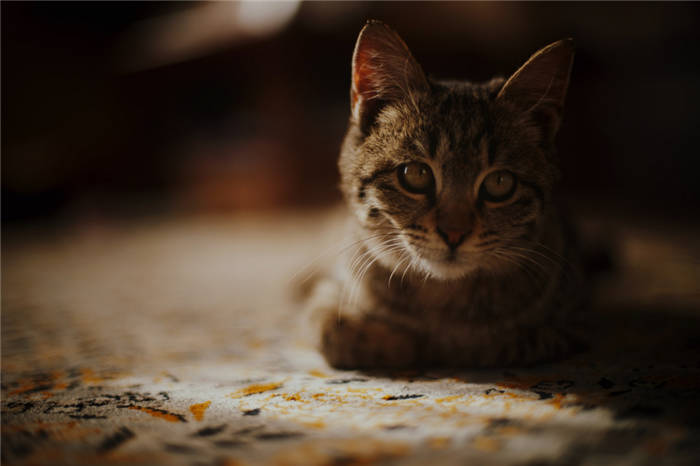
Danger of the condition
One-time vomiting in a cat is not dangerous, but prolonged vomiting can lead to a sharp weakening of the immune system. Due to dehydration and loss of energy reserves, the body is vulnerable to infections. If the symptoms are complemented by watery stools, the animal risks dying from lack of moisture.
A preliminary diagnosis can be made by examining the color of the vomit. Be sure to photograph them before the visit to the vet clinic or take a small sample to show to the doctor.
Foam
The most common type is frothy. It is odorless and is produced by a chemical reaction. Excess gastric juice, which irritates the mucosa, escapes and oxidizes, turning into foam. If a cat is vomiting because of long pauses between feedings, they should be reduced and food should be given more often.
Foam also forms in the opposite situation, that is, when overeating. Another possible cause is a change of food: switching to a different brand, introducing new products or the beginning of dieting in kittens. If the attacks are too frequent and accompanied by loss of appetite, it is worth checking the pet for gastritis.
With blood.
The most dangerous type is bloody. Such a symptom indicates a serious malfunction within the body. Brown blood, resembling coffee grounds, indicates gastric and intestinal bleeding, and scarlet blood indicates problems with the esophagus and oral cavity, caused by mechanical trauma to the mucous membranes.
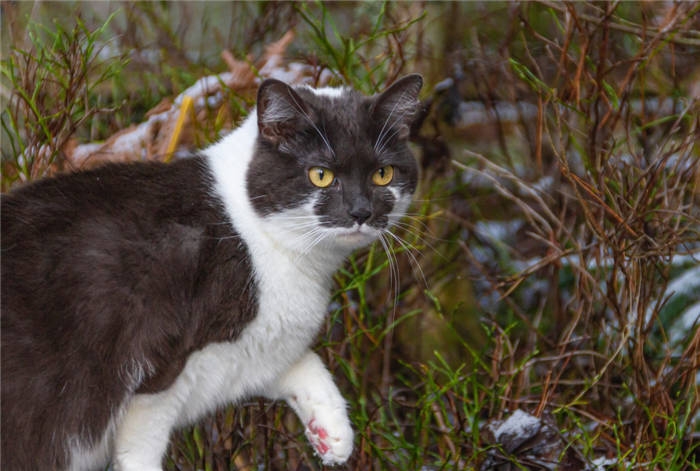
With chunks of food.
If a cat is vomiting undigested food, she is probably overeating or eating her food too fast. Food that is not fully chewed and enters the stomach in large quantities is rejected. The animal may ask for more immediately after the gag reflex because it does not have time to feel full.
Yellowing.
The appearance of jaundice indicates abnormalities in the liver and biliary tract. The staining is due to the release of bile, which is characteristic of worm infestations, poisoning, pancreatitis, cholecystitis and unbalanced diet (fatty foods).
When to see a doctor
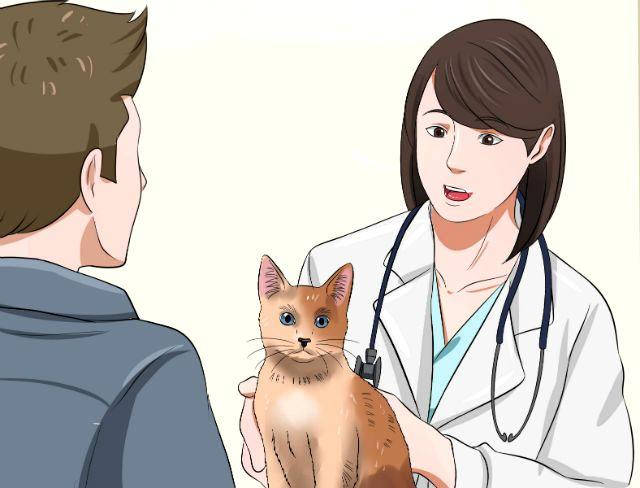
In order not to put the health and life of the cat at risk, at the first serious symptoms it is important to immediately contact the veterinarian, determine the main causes of vomiting and malaise, to choose an effective treatment. After all, quality food, healthy sleep, and the love of the owner are the most important things in every cat's life.
💡 A side note. You can always ask a veterinary nutritionist for help in making up a balanced diet for your cat. You don't have to go anywhere at all. On Veterinarian Online you can get a consultation from a veterinary nutritionist at any time from the comfort of your home.
Treatment
Only a veterinarian can prescribe medications after examining the animal and talking with the owner. The process may involve several stages:
- The first time – from 6 to 8 hours – the animal should not be fed.
- At the end of the break in food intake, a sparing diet is prescribed, depending on the diagnosis.
- The cat should be fed in small portions, this scheme may have to be used permanently.
- The main diet should consist of cooked poultry meat, lean fish, rice and its broth.
- If well-being improves, the menu can be gradually expanded.
- When poisoning, antiemetics and detoxifying drugs are prescribed. They should be taken every day for the specified time and in accordance with the instructions for use.
It is important to monitor the progress of treatment with your doctor. If the condition worsens, a second consultation will be necessary.
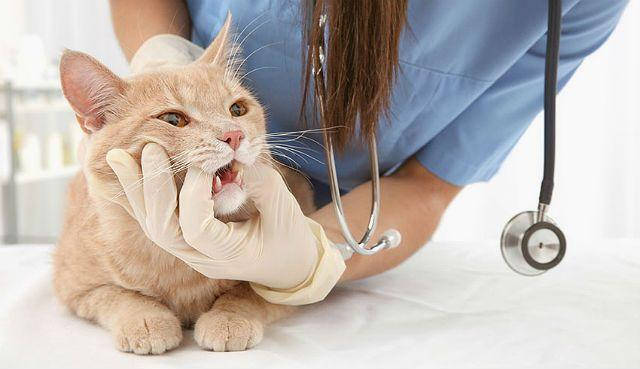
How to avoid vomiting
If the cause of the cat's vomiting is due to faulty nutrition, simple rules should be followed to prevent repeated episodes:
- If it is necessary to change cat food, this should be done gradually: replace some of the old food with new food every day;
- Divide the daily dose of food into smaller portions, and make meals more frequent;
- Switch the cat to natural food if the food causes vomiting;
- If there are hair problems, use special food for long-haired cats.
Vomiting in a cat is an indicator of problems in the organization of life. To eliminate this situation, you will need to analyze all aspects of the pet and find the cause of nausea.
If this has happened once before, it is important to continually pay maximum attention to the quality of the food and the food schedule.
💡 On a side note. You can always ask a veterinary nutritionist for help in making a balanced diet for your pet. You do not need to go anywhere for this. You can consult a veterinary nutritionist online at any time without leaving your home.
When you need to see a veterinarian urgently
- A kitten has been vomiting for two days or more;
- vomiting several times a day;
- There is blood or bile in the secreted contents;
- The cat does not eat anything, but only drinks water and sleeps;
- other symptoms in the form of fever, lethargy, nasal or eye discharges, stomach upsets appear;
- The cat vomits regardless of food intake.
To make a diagnosis, the doctor examines the cat, examining the symptoms from the owner's words. If necessary, an ultrasound, blood tests, gastroscopy are additionally appointed.
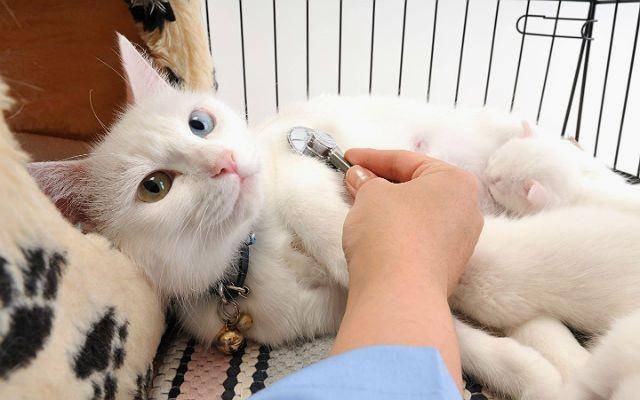
Prevention
No one is immune from cat vomiting. But it is possible to reduce the likelihood of its appearance. There are a few simple guidelines:
- Give your cat only fresh food;
- Give regular preventive vaccinations;
- Comb long-haired cats regularly;
- Feed small portions 3-4 times a day;
- remove all household chemicals from the cat's reach;
- give anthelmintics every three months;
- remove all small objects from the house;
- Do preventive examinations at the veterinarian.
If the cat does not eat anything, only drinks water and sleeps, do not panic or self-medicate. Learning the symptoms and seeing a veterinarian in a timely manner can fix the situation for the better.
💡 A side note. You can always enlist the help of a veterinarian nutritionist to properly compose a balanced diet for your pet. You do not need to go anywhere for that. On Veterinarian Online you can get a consultation from a vet at any time and from the comfort of your home.






